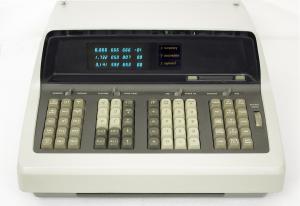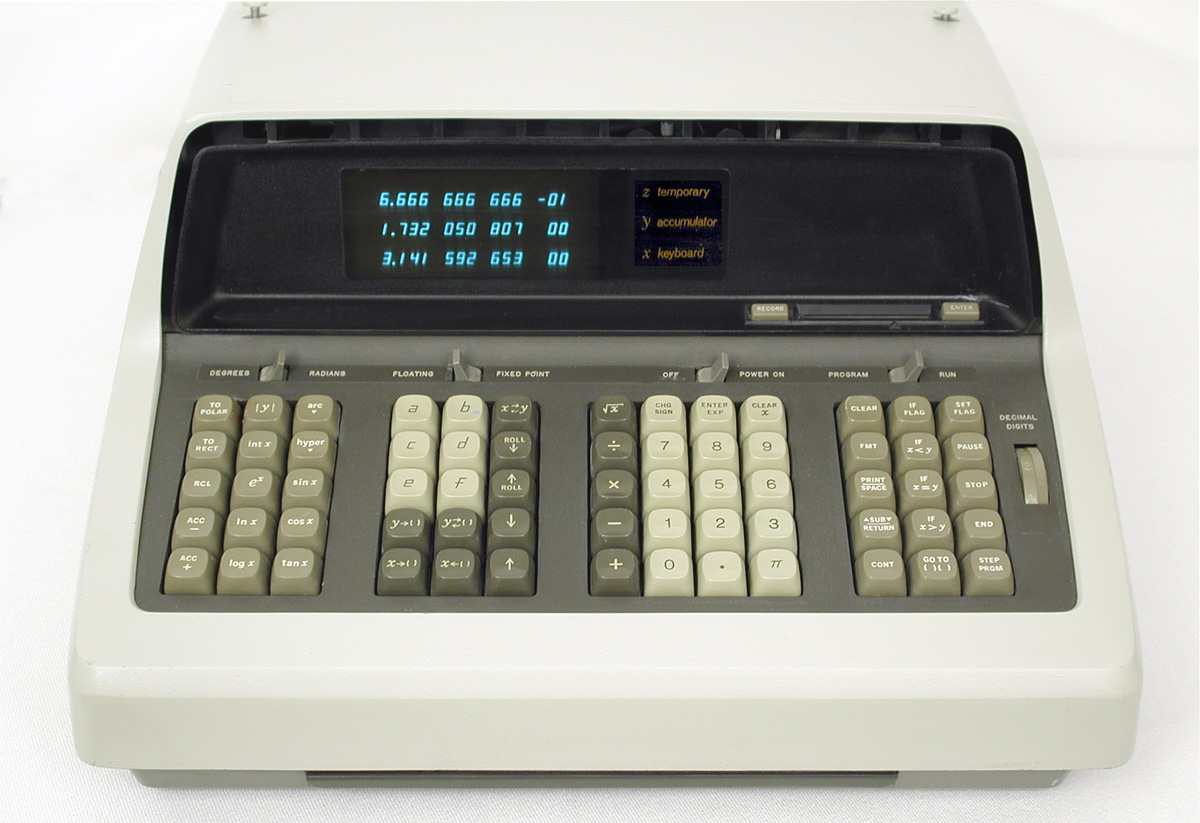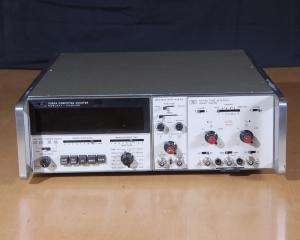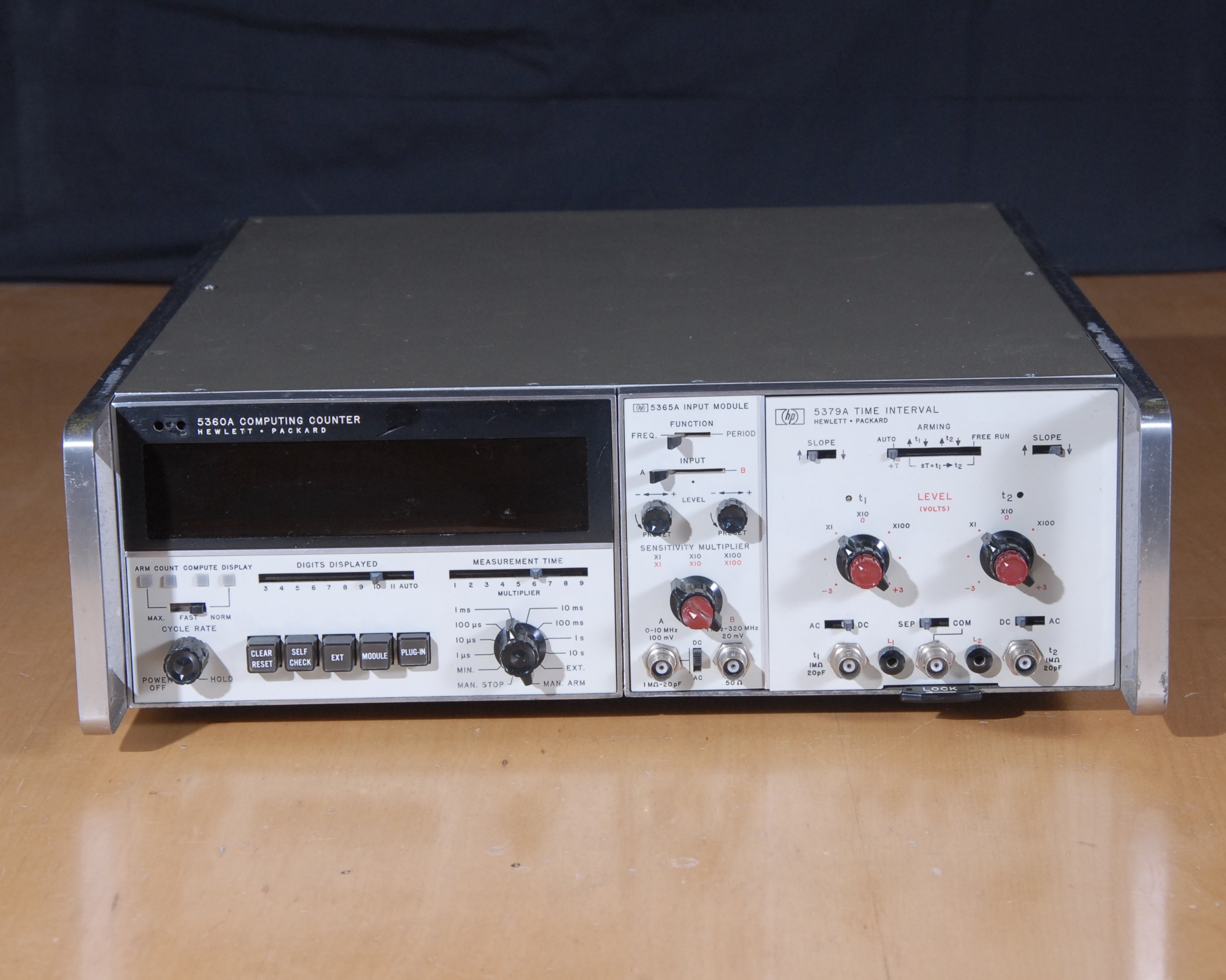Hewlett-Packard Electronic Calculators
The Hewlett-Packard company enjoyed a Golden Age from the mid 1950s to the mid 1990s. During this period HP was a consistent innovator, producing instruments that were sold to a US technology industry which enjoyed the same Golden Age. HP's products were invented, built and used by the engineers who in turn built satellites, spacecraft and supercomputers. These users valued excellent quality and were able to pay for this to be built to the highest standard.
The HP9100 Calculators
HP's 9100 series electronic calculators are well known and rightly recognised as groundbreaking scientific calculators. They represented a quantum leap over the Wang 300 series which was leading scientific and engineering calculator of the mid 1960s.
The story of the development of the 9100 series is very well documented and is well worth reading - see The 9100 Project and HP Memory Project. Development of the 9100 began in mid 1965 and it was three years before the first prototype machines were shown in mid 1968. The 9100 was developed in California and many difficult problems in electronics, ROM memory design and microprogramming had to be solved. It is clear that a large team must have been involved and while HP would surely have kept this project secret from the outside world it is hard to imagine that it could have been kept secret within the HP organisation in California.
The HP 5360A Computing Counter
It was quite a surprise to discover that the HP5360A contains a stored-program electronic scientific calculater that seems to have been developed in the HP Santa Clara (California) division between 1964 and 1968, quite independently of the 9100 calculator. In the case of the 5360A it appears that the designers' goal was to make a quantum leap in the range and precision of frequency and period measurements. One of the means to achieve this goal was to use period measurements to determine frequency and vice versa, which could be done very simply if the reciprocal of each measurement could be calculated. Hence the need for an electronic calculator within the instrument. This calculator could in turn be used to enhance the instrument's data (eg by calculating averages) or could be directly exposed to the user by providing a calculator keyboard.
The calculator within the 5360A has a peculiar instruction set that is clearly tailored to its main use as a dedicated processor for the Counter instrument. One wonders if a better result could have been obtained by incorporating a reduced version of the 9100 hardware into the 5360A. This could have provided the necessary calculation functions for the Counter instrument together with a better and more useful desk calculator facility. Perhaps HP internal secrecy was so good or HP's internal silos were so tight that the two calculator teams had no inkling of each other, despite both being based in California.
HP Continues in the Calculator Business
It is well known that HP enjoyed continued success in the calculator business for over 20 years after the HP9100. The key to this success was strong and successful R&D which allowed HP to remain at the cutting edge of calculator design and to command an associated price premium. Basic 4-function calculators suffered price collapse in the early 1970s as their manufacturing costs fell and sales volume increased. This price collapse spread into more complex calculators through the late 1970s and 1980s but HP always managed to stay ahead of this process by providing calculators so advanced that users found them to be good value for money, despite their consistently high prices.



